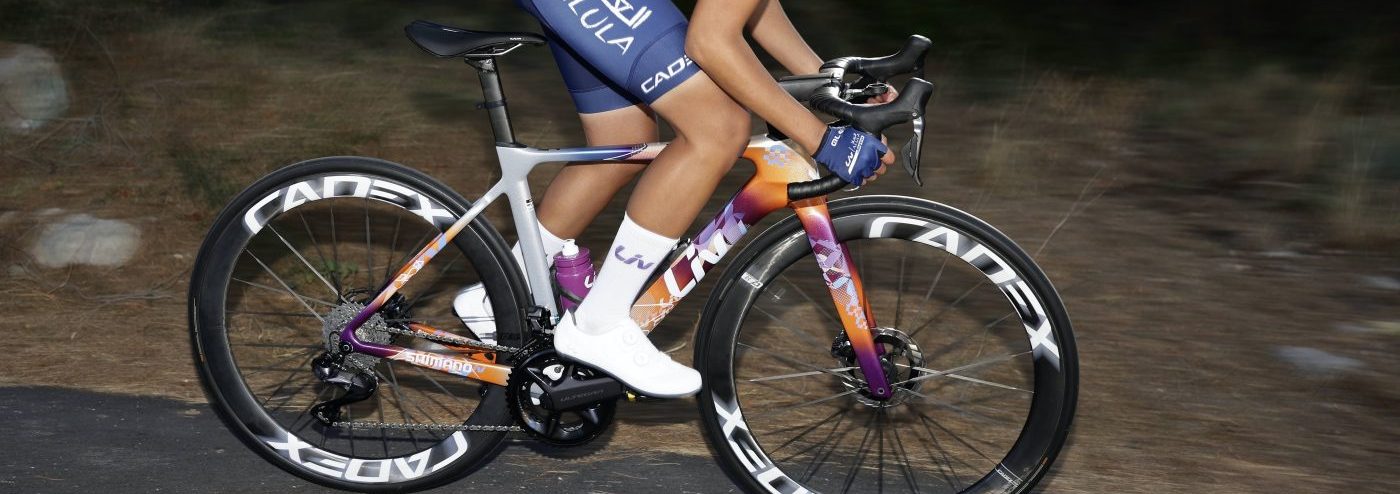

The Feet
Foot pain can be a bothersome issue when cycling, particularly in warm weather. But it’s not just ‘burning’ feet that can be problematic; pain in the toenails can also occur. Therefore, in this edition of ProCycling Women medical section, we’re focusing on the feet.
Pressure Spots in Cycling Shoes
Having a ‘bunion’ at your big toe joint or claw toes (a condition where the toes are bent) makes it challenging to find suitable cycling shoes. Painful pressure spots on the bunions can quickly develop. A wider shoe might solve this issue, but then another problem arises: the shoe is also wider at the heel, causing slippage at the back. Painful bunions on the heel can also cause a lot of discomfort. The heel cap of the shoe is often hard for good support but doesn’t flex. This often leads to blisters. A softer heel cap gives less pressure but also less support to the foot.
Does this mean that if you have bunions or claw toes, you always have to cycle in pain? Certainly not. With a few simple considerations, you can prevent a lot of trouble. When buying cycling shoes, pay attention to the right width of the shoe. The height of the shoe at your toes is also important, especially for clawing toes. Also, consider the thickness of the insole in the shoe. If there is a thick sole, it can be replaced with a thinner one to create more room at the toes.
Pay attention to the material at the painful ‘bunion.’ It’s best if it is flexible and yields. Preferably, there should be no stitching at that spot, as it does not stretch. You can use shoe stretchers when not wearing the shoes to stretch the shoe at a painful spot. There are shoe stretchers with special ‘plugs’ to stretch the shoe very specifically at the painful spot. If you can’t find these, a shoe repair shop can often do this for you, known as ‘setting the shoe on the last.’
If these solutions are not sufficient, a (sports) podiatrist can adjust the shoe or make a special shoe for you. This can involve locally deforming the shoe to relieve the ‘bunion’ or making a shoe that better distributes pressure.
Pain Under the Heel or Arch of the Foot
Underneath the foot lies a tendon plate, the plantar fascia in medical terms, which supports the foot’s arch. This tendon plate is attached to the heel bone at the back and to the forefoot at the front. When pressure is put on the foot, for example, while pedaling during cycling, the foot’s arch sags slightly. This stretches the tendon plate, leading to tension, particularly at the attachment to the heel. Frequent overuse can lead to overloading and, in severe cases, even damage to the fibers. This results in pain in the arch or heel, often experienced as start-up pain and pain under longer load, sometimes intensifying after a period of rest.
Feet that tend to angle inward or easily sag inward under load are at higher risk of developing issues. You can easily test how your foot reacts, as we have explained before. Stand on one leg in front of a mirror. Bend your knee and observe how your foot moves. Does it sag inward significantly or maintain its shape? In the first case, training for stability or using a (cycling) sole can remedy the problem. A difference in leg length can cause the foot on one side to sag, usually on the side of the longer leg. Compensating for the length difference with an insole usually solves this issue.
But saddle height also matters in preventing foot pain. Saddle height affects foot position and vice versa. Standing ‘high’ on the toes or pedaling with a low ankle changes the tension on the tendon plate. The ideal foot position varies from person to person. Therefore, it is advisable to undergo a dynamic cycling position measurement to determine the ideal saddle position.
Blue Toenail
One aspect of the foot deserves extra attention. Many cyclists experience blue toenails or toenails falling off, an unpleasant and often painful issue. The bluing of the nail is caused by friction or the toe hitting the tip of the shoe, leading to bleeding under the toenail. The cause could be a shoe that’s too small or too narrow. Swelling of the feet in warm temperatures can also contribute, eventually making the shoe too small. The blood’s pressure can cause a throbbing sensation in the toe.
If you’re experiencing significant pressure or pain from a blue toenail, you can make a hole in the nail. This allows the blood underneath to drain, reducing the pressure. A (sports) pedicurist can do this with a small drill, making a neat hole in the nail. You can also make a hole yourself, but ensure everything is well sterilized to prevent infection! Use a sterilized needle to make a hole in the toenail (holding the needle in hand and making a twisting/drilling motion). Another method is to heat a needle and burn a hole in the toenail. Then, soak the foot in a basin of water until the blood flows out. If the blue nail isn’t painful, it’s not necessary to make a hole. However, keep an eye on the toe, as the nail will likely loosen after some time.
While it’s good to have a solution for a blue toenail, prevention is better. Therefore, pay attention to the proper fit of the shoe, neither too small nor too large. Too large shoes can cause you to slide forward, causing toenail issues, while too small shoes are too tight. The width of the shoe is also important. Due to feet swelling in higher temperatures, you might need a larger shoe in the summer, meaning a cycling shoe for summer and another for winter—a great reason to buy an extra pair of shoes!